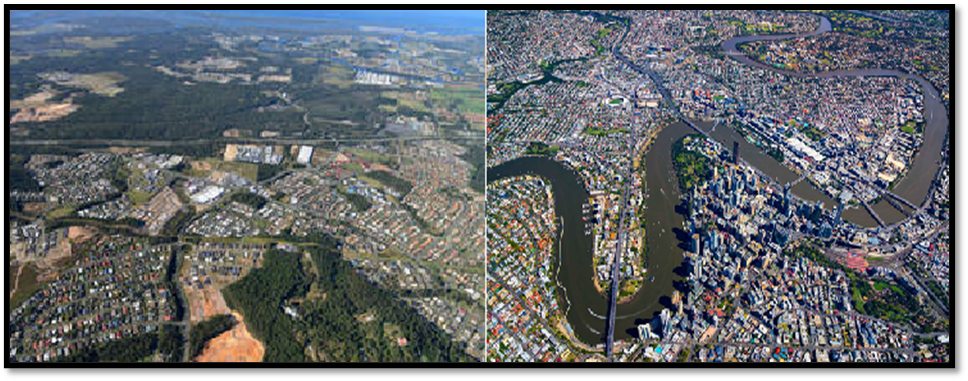Do you understand the difference between physical growth and capital growth?
Not to worry if you don’t, because I’ll explain.
You see… physical growth will often be masked as capital growth.
On the surface, there is no way of telling the difference.
However, by digging deeper and having a greater level of awareness and perspective, you will quickly understand the difference.
So why is it important to know the difference?
Well it could cost you hundreds of thousands of dollars over a decade or more, not to mention the opportunity costs that are foregone.
Let me explain –
A starting point
To start with you will need to find the right data to analyse.
As a property investor your primary focus should be capital growth.
So, this would be my starting point.
Unfortunately, most investors will only analyse the last 3 – 5 years of data, as this is all that is provided by most free property research websites.
I feel that this time short frame has much higher risk as it barely captures one full property cycle.
Ideally, as a professional investor, I would be analysing 20 to 30 years’ worth of data, which encompasses multiple property cycles, downturns and X – factor type events.
This longer-term data will greatly reduce your level of risk.
After analysing the data you will be left with a list of suburbs that have had the best capital growth over that specific time frame.
Now you must separate the contenders from the pretenders.
Physical growth
You will need to dig a little deeper to separate the suburbs that have had true capital growth from those which have only had “physical” growth.
The easiest way to define suburbs that have had physical growth are ones that are new and were only established over the last few years.
The reason they did not show up on our longer term 20-year data set is because there were likely sheep, cows and koalas living there before.
The land has been cleared and subdivided for new housing estates.
There are brand new houses being built on smaller blocks of land, then there are shopping centres and schools popping up.
The odd McDonalds or KFC shows up and maybe even a new bus stop or trainline.
It is really just “physical” growth, as the suburb begins to transform and expand.
But not “capital” growth where the value of a particular property increases.
What happens is demand slowly increases as these areas are new, exciting and affordable, but that is only one side of the equation.
The other side is supply and this is where, in my opinion, the excitement ends.
Quit often there is still 7 – 10 years’ worth of land left to be built out, Stage 1 quickly becomes Stage 3 or 5 and so on.
Then demand for the existing, established properties drops like a stone.
After all, who would want to buy a 2-3-year-old home, when they can pay $10,000 more and build their own home with their personalised touches.
Likewise, for investors chasing depreciation, this can only be captured with newly built properties.
While it is not uncommon to receive a small burst of equity in the early stages, you will be stuck holding a bad investment as the physical growth vanishes.

Capital growth
While physical growth may initially mimic capital growth, it is very different from capital growth in the true sense.
The suburbs that show up on the longer-term growth charts are what you should be looking for, as they have been established for many decades.
In addition, these established suburbs tend to have the opposite ratio of Demand and Supply to the newer suburbs.
Firstly, there is consistently, higher demand in these locations as they are close to our major employment hubs, public transport and lifestyle precincts.
And there are no new parcels of land available for more housing.
Sure, you may be able to knock over or subdivide existing lots, but you can not just pop in another 1,000 new homes or release new stages.
So, with a level of high demand and very low supply, the ingredients are right for long term, sustainable, capital growth.
You can see the results here from my recent article about the best performing suburbs in Brisbane over the last 20 years.
You will also be able to understand the common traits each of them had to attain the higher levels of capital growth, consistently over two decades.
It pays to know the difference
You may ask, why is it so important to know the difference?
Properties with superior, true capital growth will always outperform suburbs with physical growth over the longer term.
As an investor you need to find assets with above average, consistent, wealth producing levels of return that you can hold in your portfolio.
While a physical growth suburb may appear to have superior growth over a 2-3 year period, it will consistently underperform over the longer term.
Even just a few percentage points difference in capital growth each year, annualised and compounded over a decade or two, could equate to hundreds of thousands of dollars.
Not to mention the opportunities to further expand your portfolio and wealth, given superior return and additional equity.
In summary
For the majority investors Capital Growth should be a primary focus when building an asset base.
So, it makes sense to analyse the appropriate data and, in my opinion, the longer the timeframe the better.
With a long list of suburbs, you must then distinguish the areas that have proven capital growth as opposed to superficial physical growth.
You will find the suburbs with Capital Growth, consistently demonstrate above average demand and very low supply.
While Physical Growth suburbs generally have huge amounts of land supply and demand barely keeps up with average.
There may be a small initial “sugar hit” with physical growth suburbs, which is why they make a lot of short-term capital growth lists, but longer term they are non-existent.
To build wealth you need to maintain above average, consistent levels of capital growth for decades, not just a short-term hotspot.
Therefore, it pays to know the difference – it could cost you hundreds of thousands of dollars over the long run.
Here’s how you can get to outperform the markets
Why not get the independent team of property strategists and buyers' agents at Metropole to help level the playing field for you?
We help our clients grow, protect and pass on their wealth through a range of services including:
- Strategic property advice - Allow us to build a Strategic Property Plan for you and your family. Planning is bringing the future into the present so you can do something about it now! Click here to learn more
- Buyer's agency - As Australia's most trusted buyers’ agents we've been involved in over $3Billion worth of transactions creating wealth for our clients and we can do the same for you. Our on the ground teams in Melbourne, Sydney and Brisbane bring you years of experience and perspective - that's something money just can't buy. We'll help you find your next home or an investment grade property. Click here to learn how we can help you.
- Wealth advisory - We can provide you with strategic tailored financial planning and wealth advice. Click here to learn more about we can help you.
- Property management - Our stress free property management services help you maximise your property returns. Click here to find out why our clients enjoy a vacancy rate considerably below the market average, our tenants stay an average of 3 years and our properties lease 10 days faster than the market average.
.....................................................
 Brett Warren is a director of Metropole Properties in Brisbane and uses his 18 plus years property investment experience and economics education to advise clients how to build their portfolios.
Brett Warren is a director of Metropole Properties in Brisbane and uses his 18 plus years property investment experience and economics education to advise clients how to build their portfolios.
He is a regular commentator for Michael Yardney's Property Update.
Disclaimer: while due care is taken, the viewpoints expressed by contributors do not necessarily reflect the opinions of Your Investment Property.
